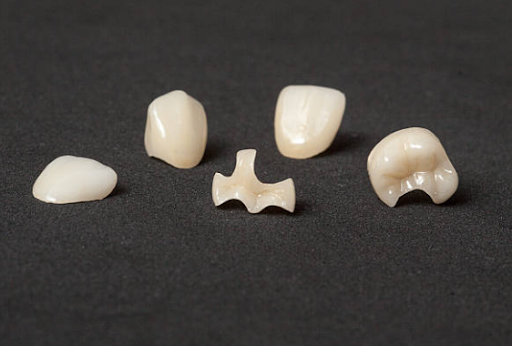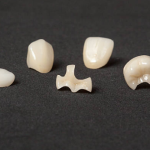If you’ve ever had a damaged or decayed tooth but didn’t entirely require a full crown, you may have heard your dentist mention dental inlays or dental onlays. So, what are dental inlays and onlays? These are customized, tooth-colored restorations intended to repair teeth with moderate damage that is more extensive than a filling can manage, but less than what would need a full crown.
In other words, they’re the absolute middle ground. Whether you’re concerned about porcelain inlays, composite onlays, or simply want to understand the inlays and onlays procedure, this article will guide you through it. We’ll explore the differences, benefits, and why many patients are selecting this option for long-lasting tooth restoration.
Understanding the Basics of Tooth Restoration
Before diving into the explanation of inlays and onlays, it’s helpful to understand what tooth restoration means. The dentist’s goal is to restore the tooth’s shape, stability, and function if it is decayed, cracked, or worn. The aim is always to preserve as much of the natural tooth as possible.
Sometimes a tiny dental cavity can be fixed with a simple filling. But when the decay is a bit larger, indirect fillings such as inlays and onlays come into play. These restorations are made outside the mouth (usually in a dental lab) and then bonded to the tooth. That’s why they’re known as “indirect.”
What Are Dental Inlays?
Dental inlays are used when the damage or decay is detected between the cusps (the raised bite) of your tooth. Believe in them as puzzle fragments that fit neatly into the core of your tooth. They are designed to restore the chewing surface without touching the outer tips of the tooth.
Inlays are stronger than periodic fillings and are made from materials that include porcelain, gold, or composite resin. Porcelain inlays are particularly prominent because they match the color of your natural tooth and blend in beautifully.
What Are Dental Onlays?
Now let’s talk about dental onlays. These are similar to inlays, but they protect a larger area. They are sometimes known as “partial crowns” because they extend over one or more of the tooth’s cusps. If part of your tooth is broken or severely worn down, an onlay dental treatment might be the best option.
Composite and porcelain onlays are perfect options for patients seeking natural-looking, long-lasting, and functional outcomes. Just like inlays, onlays are tailored to fit your teeth ideally.
Inlay vs Crown: Why Not Just Get a Crown?
That brings us to another usual question: inlay vs crown, which is better? Crowns are more aggressive in that they need a larger section of the natural tooth to be removed. They cover the entire tooth and are typically used when damage is extensive.
In contrast, inlays and onlays preserve more of your natural tooth structure. They are less invasive and still provide excellent protection and support. So, dentists prefer using inlays or onlays instead of crowns.
Tooth-Colored Restorations: Natural and Beautiful
One of the biggest advantages of inlays and onlays is that they are tooth-colored restorations. This means they can be made to match your natural teeth, making them almost invisible when you smile or talk.
Porcelain inlays and composite onlays are particularly good at blending in with your teeth. This is a significant advantage for those who value the appearance of their dental work. These materials are not only attractive, but they are also strong and durable.
The Inlays and Onlays Procedure: What to Expect
The inlays and onlays procedure is fairly simple, but it usually takes two visits. During the first visit, your dentist will remove the damaged or decayed part of the tooth and take an impression. This mold is sent to a dental lab where your custom inlay or onlay is created.
In the meantime, a temporary filling may be placed. After you have organized your restoration, you will return for your second appointment. Your dentist will then bond the inlay or onlay to your tooth using a strong dental adhesive and polish it to match your bite.
Benefits of Inlays and Onlays
There are many benefits of inlays and onlays, which is why more dentists are recommending them. Initially, they are strong and can endure biting forces more effectively than conventional fillings. Second, they don’t expand or shrink with temperature changes, which helps protect your tooth over time.
Another big advantage is that they are custom-made. This means they fit your tooth like a glove, reducing the risk of future decay. And since they are tooth-colored restorations, they also look completely natural.
Moreover, because inlays and onlays preserve more of your original tooth structure, they help keep your teeth healthier for longer.
When Are Inlays or Onlays the Right Choice?
Inlays and onlays are ideal for people who have moderate tooth damage, too much for a regular filling but not enough to need a crown. Your dentist will look at the size and location of the decay or fracture and decide which type of restoration is best for your situation.
If you’re unsure whether you need a filling, inlay, onlay, or crown, don’t worry. A good dentist will guide you through your options and explain what will give you the best long-term results.
Why Choose Kelson Family Dental?
At Kelson Family Dental, we now provide comprehensive dental services for all ages, provided by some of the best dentists in the field, at an affordable price. We provide top-notch dental and orthodontic care, and specialize in Invisible Braces, teeth whitening, teeth straightening, implants, crowns, Inlays, and onlays procedures.
Kelson Family Dental, our expert dentists, must treat you with friendly behavior and solve your dental issues. We also use the latest technology not for its own sake, but to increase clinical efficiency, improve diagnosis, treatment success, and quality of care for our patients. We are here to restore the perfect smile you deserve.
Final Thoughts
So, what are dental inlays and onlays? They are smart, strong, and beautiful ways to repair damaged teeth without going overboard. Whether you need a small fix with an inlay or a bit more coverage with an onlay, these restorations offer a middle ground between fillings and crowns.
If you’re looking for a durable, natural-looking solution that protects your tooth and restores its function, inlays and onlays might be just what you need. Plus, the procedure is easy, and the results speak for themselves.
Ready to take the next step in restoring your smile? Schedule a Consultation with our dental team today to find out if inlays or onlays are the right choice for you. Your smile deserves the very best!







4 Comments
https://shorturl.fm/YT6GS
https://shorturl.fm/PhXnt
https://shorturl.fm/M3uQT
https://shorturl.fm/JUMOF